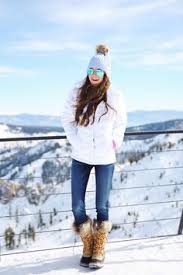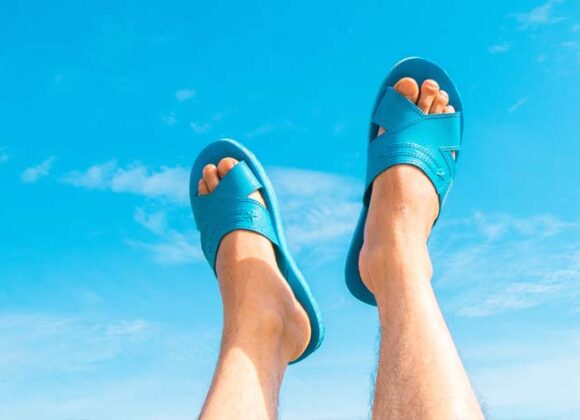Introduction: Why Snow Packing Is More Than Just Staying Warm
Packing for snowy weather isn’t just about bundling up—it’s about choosing the right gear to stay warm, dry, and comfortable while enjoying winter activities. Whether you’re heading to a ski resort, planning a snowy hike, or simply visiting a cold-weather destination, knowing what to wear for snow weather can make or break your experience.
From layering strategies to choosing the best pants to wear in snow, this guide covers everything you need to pack smart and stay cozy.
🧥 The Layering System: Your First Line of Defense Against the Cold
Layering is the cornerstone of dressing for snow. It allows you to regulate your body temperature, stay dry, and adapt to changing conditions.
1. Base Layer (Moisture Management)
This layer sits closest to your skin and is responsible for wicking away sweat.
- Materials: Merino wool, synthetic blends (polyester, nylon)
- Avoid: Cotton—it retains moisture and loses insulation when wet
- Examples: Thermal tops and leggings, long-sleeve compression shirts
2. Mid Layer (Insulation)
This layer traps body heat and keeps you warm.
- Materials: Fleece, down, synthetic insulation
- Examples: Puffy jackets, fleece pullovers, insulated vests
3. Outer Layer (Protection)
This layer shields you from wind, snow, and rain.
- Materials: Waterproof and windproof fabrics like Gore-Tex
- Examples: Snow jackets, ski pants, shell layers
👖 Best Pants to Wear in Snow
Choosing the right pants is crucial for warmth, mobility, and protection. Here are the top options:
1. Insulated Snow Pants
These are the gold standard for snow sports and heavy snowfall.
- Features: Waterproof shell, thermal lining, reinforced knees
- Best For: Skiing, snowboarding, snowmobiling
2. Softshell Pants
Ideal for active movement in light snow conditions.
- Features: Water-resistant, breathable, stretchy
- Best For: Hiking, snowshoeing, winter walks
3. Fleece-Lined Leggings
Great for layering or casual wear.
- Features: Soft interior, flexible fit
- Best For: Under snow pants, lounging, light activity
4. Merino Wool Pants
Naturally insulating and breathable.
- Features: Odor-resistant, moisture-wicking
- Best For: All-day wear, layering under shells
5. Convertible Snow Pants
Some snow pants come with zip-off features or adjustable insulation.
- Features: Versatile, multi-climate use
- Best For: Travelers moving between climates
🧤 Clothing for Snow Weather: Head-to-Toe Essentials
Here’s a complete checklist of what to wear for snow weather, broken down by body zone:
🧠 Head
- Insulated Beanie or Hat: Keeps heat from escaping
- Balaclava or Neck Gaiter: Protects face and neck from windburn
- Ski Goggles or Sunglasses: Shields eyes from glare and snow
🧣 Neck
- Scarf or Neck Warmer: Adds insulation and blocks drafts
🧥 Torso
- Base Layer Shirt: Moisture-wicking and snug
- Mid Layer Jacket or Sweater: Fleece or down
- Outer Shell Jacket: Waterproof and windproof
🧤 Hands
- Gloves or Mittens: Waterproof with insulation
- Liner Gloves: Thin gloves for dexterity under mittens
👖 Legs
- Thermal Leggings: Base layer
- Snow Pants: Insulated or shell depending on activity
🧦 Feet
- Wool or Synthetic Socks: Avoid cotton
- Snow Boots: Insulated, waterproof, with good traction
- Gaiters (Optional): Prevent snow from entering boots
🎒 Snow Packing List: Essentials to Bring
Here’s a practical packing list for a snowy getaway:
Clothing
- 2–3 base layer sets (top and bottom)
- 2 mid-layer sweaters or jackets
- 1 waterproof outer shell jacket
- 1–2 pairs of snow pants
- 3–4 pairs of wool socks
- 2 pairs of gloves (one waterproof, one liner)
- 1 insulated hat
- 1 scarf or neck gaiter
- 1 pair of snow boots
Accessories
- Sunglasses or goggles
- Lip balm with SPF
- Sunscreen (yes, even in snow!)
- Hand warmers
- Backpack with waterproof cover
Optional Gear
- Gaiters
- Thermal underwear
- Heated insoles
- Portable humidifier (for dry cabin air)
🏂 Activity-Specific Snow Clothing Tips
Different snow activities require different gear. Here’s how to tailor your packing list:
❄️ Skiing & Snowboarding
- Helmet
- Ski goggles
- Insulated snow pants
- Waterproof gloves
- Snow jacket with powder skirt
❄️ Snowshoeing & Hiking
- Softshell pants
- Lightweight waterproof jacket
- Trekking poles
- Moisture-wicking base layers
❄️ Cabin Retreats
- Cozy loungewear
- Slippers or indoor boots
- Fleece blankets
- Casual snow boots
🧼 Caring for Snow Clothing
Snow gear is an investment—here’s how to keep it in top shape:
- Wash base layers regularly: Use gentle detergent
- Avoid fabric softeners: They reduce moisture-wicking ability
- Air-dry outer layers: Heat can damage waterproof coatings
- Store in breathable bags: Prevent mildew and odor
🌡️ Dressing for Snow Weather: Temperature Guide
Here’s a quick reference for what to wear based on temperature:
| Temperature | What to Wear |
|---|---|
| 0°C to -5°C | Base + mid layer + waterproof shell |
| -5°C to -15°C | Add insulated snow pants and thicker mid layer |
| Below -15°C | Use down layers, heated accessories, and double socks |
🧠 Pro Tips for Snow Packing Success
- Pack extra layers: Weather can change quickly
- Use compression bags: Save space for bulky items
- Roll clothes instead of folding: Prevent wrinkles
- Label gear: Especially useful for group trips
- Test gear before travel: Make sure everything fits and functions
🧳 Sample Packing Plan: 5-Day Snow Trip
Here’s a sample plan for a 5-day snowy adventure:
Day 1: Arrival & Exploration
- Fleece-lined leggings
- Mid-layer sweater
- Waterproof boots
Day 2: Snow Activities
- Thermal base layer
- Insulated snow pants
- Snow jacket
Day 3: Hiking or Snowshoeing
- Softshell pants
- Lightweight shell
- Wool socks
Day 4: Cabin Relaxation
- Cozy loungewear
- Slippers
- Beanie
Day 5: Departure
- Easy-to-pack outfit
- Waterproof boots
- Neck gaiter
🏔️ Final Thoughts: Snow Style Meets Function
Packing for snow weather is all about balance—between warmth and mobility, style and practicality. Whether you’re chasing powder on the slopes or sipping cocoa by the fire, the right clothing for snow weather ensures you stay comfortable and confident.
From the best pants to wear in snow to layering strategies and gear tips, this guide equips you for every snowy scenario. So zip up, layer smart, and let the snow adventures begin!




